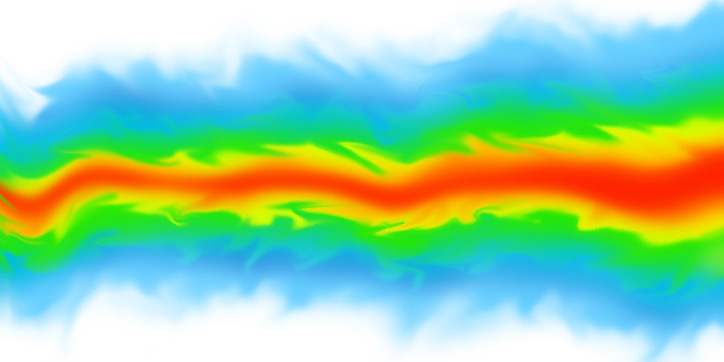Computational Fluid Dynamics (CFD) is a technology based on a fast and reliable computational methodology for solving complex fluid flow and heat transfer problems. CFD enables the product design team to reduce their risks of potential design failures, optimize their engineering design, and, could therefore, provide them with that illusive competitive advantage in the marketplace
This course provides an introduction to the scientific principles and practical engineering applications of CFD. Although it provides an overview of some of the fundamental mathematical equations governing the fluid flow and heat transfer phenomena, its emphasis is not to teach the theory behind the technology but to help the participants apply the knowledge gained into practical use of commercial CFD codes, particularly ANSYS Fluent®.
The course has six modules and provides detailed explanation of how to set up, run and interpret the results of CFD models for eight different case studies from ANSYS Fluent® and covers all the necessary theoretical background for the industrial applications of Computational Fluid Dynamics contained in the learning objectives and outline. All the necessary input data files for setting up ANSYS Fluent model files, such as the input mesh files, are provided, in order for the participants to practice their newly learned skills by going through all the step-by-step instructions for each case study.
You Will Learn To
- Set up the most appropriate CFD model (in terms of boundary conditions, material properties, solution control parameters, solution monitor, etc.) for the problem in hand
- Set up the most appropriate turbulence model for their particular applications
- Explain how to conduct both Steady state and Transient (time dependent) fluid flow simulations
- Explain how to solve for both isothermal and non-isothermal thermo-fluid applications, by including all the necessary modes of heat transfer i.e. conduction, convection and radiation, in their CFD model set up
- Explain how to solve for both Incompressible and Compressible fluid flow applications
- Explain how to solve for fluid flow through porous media and through rotating machinery
- Describe how and extract the required results and plots from the wealth of information available at the solution stage
Who Should Attend?
This course is aimed at engineers, scientists, designers and managers who would like to gain an insight into this technology and some of its vast range of capabilities.
Although it is geared toward ANSYS Fluent® users, the course is designed to be as generic as possible. The users of other CFD codes will be able to apply the knowledge gained from setting up and running the ANSYS Fluent® CFD models to their chosen commercial CFD software.
Course Materials (included in purchase of course)
- Digital course notes via ASME’s Learning Platform
- Downable Case Studies via ASME’s Learning Platform
Special Requirement
Participants must obtain their own licensed copies of ANSYS Fluent® or they may download the free student version of the software license from ANSYS, which can be installed on most MS Windows 64-bit machines. Please click HERE to review the installation specifications for the student version from ANSYS.
According to ANSYS, the only practical limitation for the use of this free student version of the software is the number of computational cells used in the CFD model, which has been set at 512,000 cells. As such, this version of the software should be sufficient for the purpose of this educational, online course, and in particular, for the case studies that form an essential part of this course.
To take this course you should have a personal computer, Web browser, Internet connection, and software to display PDF files (such as Adobe Reader®).


